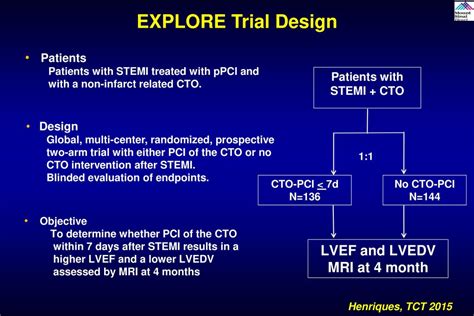lv edvi 71 ml m2 60-95 | lvedv index lv edvi 71 ml m2 60-95 Learning Center: Choose an item from the menu to get started. Technical Guide; . Certified. Includes Buyer Protection. European Union. North and South .
0 · lvedv mri
1 · lvedv index
2 · lv edvi chart
3 · how to quantify edvi
4 · edvi mri calculator
Discover the classic fragrance Creed Aventus at Bloomingdale’s, with Free Shipping and Free Returns available, or buy online and pick up in store! Take $25 off every $100 you .
Determining the left ventricular (LV) end-diastolic volume index (EDVI) is essential to evaluating LV function. LV EDVI—the volume of blood in the LV at end load filling indexed for body .The desired cardiac phase(s) is selected (e.g., end diastole), and both the LV .Fourth, myocardial perfusion defects (F2, F3)—regions in the LV myocardium in .
replica watches for sale online
Learning Center: Choose an item from the menu to get started. Technical Guide; .Learning Center: Choose an item from the menu to get started. Technical Guide; .
Left ventricular end-diastolic volume is the amount of blood in the heart’s left ventricle just before the heart contracts. While the right ventricle also has an end-diastolic volume, it’s the. The end-diastolic volume is an essential parameter used for the assessment of cardiac function, namely the calculation of the respective stroke volumes and ejection fraction . To calculate the left ventricular mass index (LVMI), follow these steps: Determine the left ventricular mass using the LV mass equation. Divide the value obtained in step 1 by .
LAEDVI was significantly associated with all-cause mortality (quartile IV versus I: HR, 2.08 [95% CI, 1.54–2.83]; P<0.001; per 1 mL/m 2 increase in LAEDVI: HR, 1.03 [95% CI, . Dimensional, volumetric and morpho-functional parameters of the left (LV) and right (RV) ventricles were measured using cine-bSSFP MRI at 1.5T. Results. The LV and RV .
How to calculate Left Ventricular End Diastolic Volume. Measure the left ventricular diameter in end-diastole. Do not measure the based upon the image end-systole or end-diastole. Position . In the B, 4 patients from this cohort have the same normal value of LA end-diastolic volume indexed (EDVi; 10 mL/m 2) but different normal LV EDVi values (top), and 4 other .Six clinical indices were chosen and ranked based on their variance in the population: End-Diastolic Volume Index (EDVI), which is end-diastolic volume (EDV) divided by body surface .Determining the left ventricular (LV) end-diastolic volume index (EDVI) is essential to evaluating LV function. LV EDVI—the volume of blood in the LV at end load filling indexed for body .
End-diastolic volume is how much blood is in the ventricles after the heart fills up with blood, but before it contracts to pump the blood around the body. Doctors use end . Left ventricular end-diastolic volume is the amount of blood in the heart’s left ventricle just before the heart contracts. While the right ventricle also has an end-diastolic .
The end-diastolic volume is an essential parameter used for the assessment of cardiac function, namely the calculation of the respective stroke volumes and ejection fraction .

To calculate the left ventricular mass index (LVMI), follow these steps: Determine the left ventricular mass using the LV mass equation. Divide the value obtained in step 1 by . LAEDVI was significantly associated with all-cause mortality (quartile IV versus I: HR, 2.08 [95% CI, 1.54–2.83]; P<0.001; per 1 mL/m 2 increase in LAEDVI: HR, 1.03 [95% CI, . Dimensional, volumetric and morpho-functional parameters of the left (LV) and right (RV) ventricles were measured using cine-bSSFP MRI at 1.5T. Results. The LV and RV .
How to calculate Left Ventricular End Diastolic Volume. Measure the left ventricular diameter in end-diastole. Do not measure the based upon the image end-systole or end-diastole. Position . In the B, 4 patients from this cohort have the same normal value of LA end-diastolic volume indexed (EDVi; 10 mL/m 2) but different normal LV EDVi values (top), and 4 other .Six clinical indices were chosen and ranked based on their variance in the population: End-Diastolic Volume Index (EDVI), which is end-diastolic volume (EDV) divided by body surface .
Determining the left ventricular (LV) end-diastolic volume index (EDVI) is essential to evaluating LV function. LV EDVI—the volume of blood in the LV at end load filling indexed for body . End-diastolic volume is how much blood is in the ventricles after the heart fills up with blood, but before it contracts to pump the blood around the body. Doctors use end . Left ventricular end-diastolic volume is the amount of blood in the heart’s left ventricle just before the heart contracts. While the right ventricle also has an end-diastolic .
The end-diastolic volume is an essential parameter used for the assessment of cardiac function, namely the calculation of the respective stroke volumes and ejection fraction .
To calculate the left ventricular mass index (LVMI), follow these steps: Determine the left ventricular mass using the LV mass equation. Divide the value obtained in step 1 by . LAEDVI was significantly associated with all-cause mortality (quartile IV versus I: HR, 2.08 [95% CI, 1.54–2.83]; P<0.001; per 1 mL/m 2 increase in LAEDVI: HR, 1.03 [95% CI, .
Dimensional, volumetric and morpho-functional parameters of the left (LV) and right (RV) ventricles were measured using cine-bSSFP MRI at 1.5T. Results. The LV and RV .How to calculate Left Ventricular End Diastolic Volume. Measure the left ventricular diameter in end-diastole. Do not measure the based upon the image end-systole or end-diastole. Position . In the B, 4 patients from this cohort have the same normal value of LA end-diastolic volume indexed (EDVi; 10 mL/m 2) but different normal LV EDVi values (top), and 4 other .
lvedv mri
$42.99
lv edvi 71 ml m2 60-95|lvedv index
























